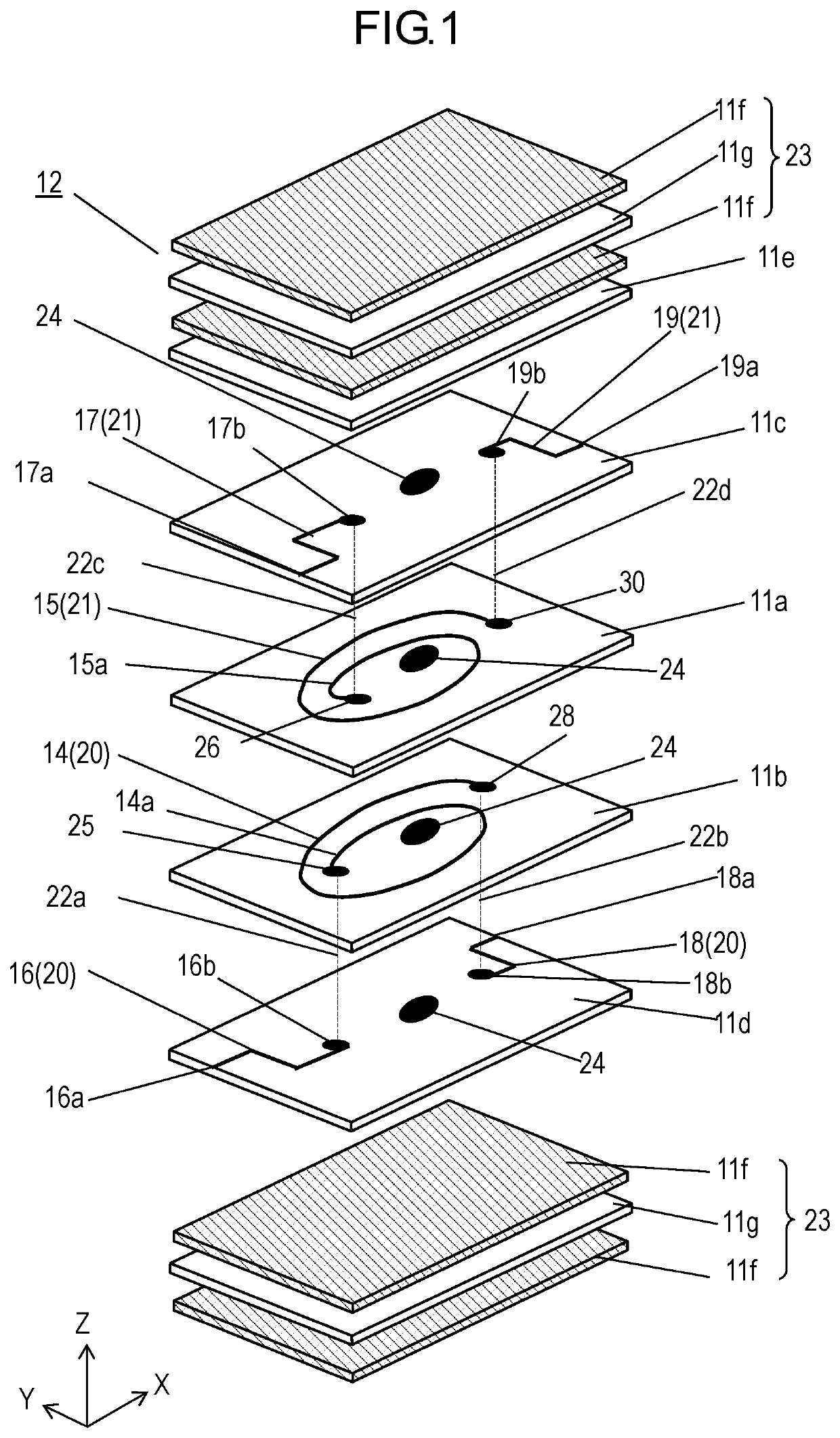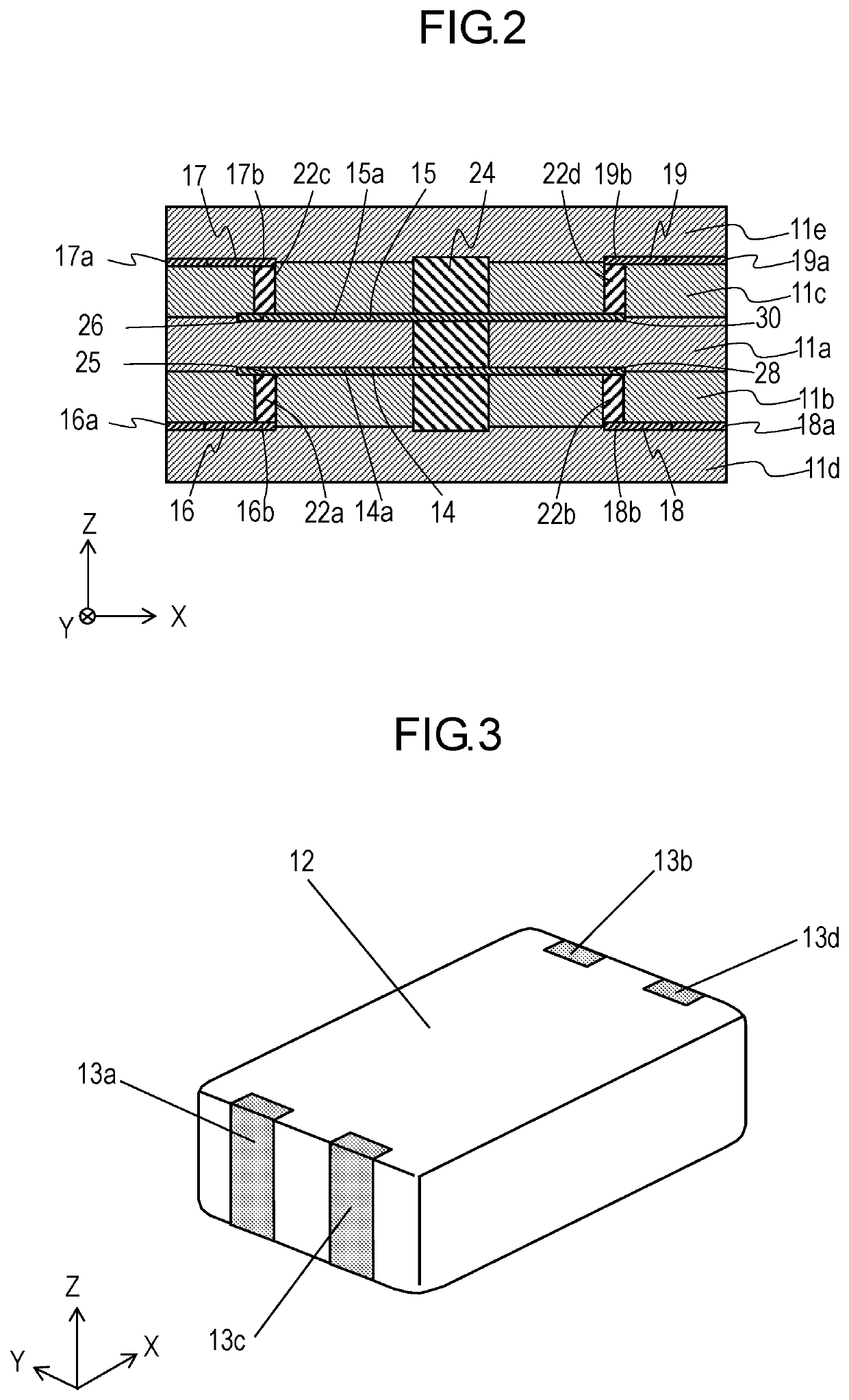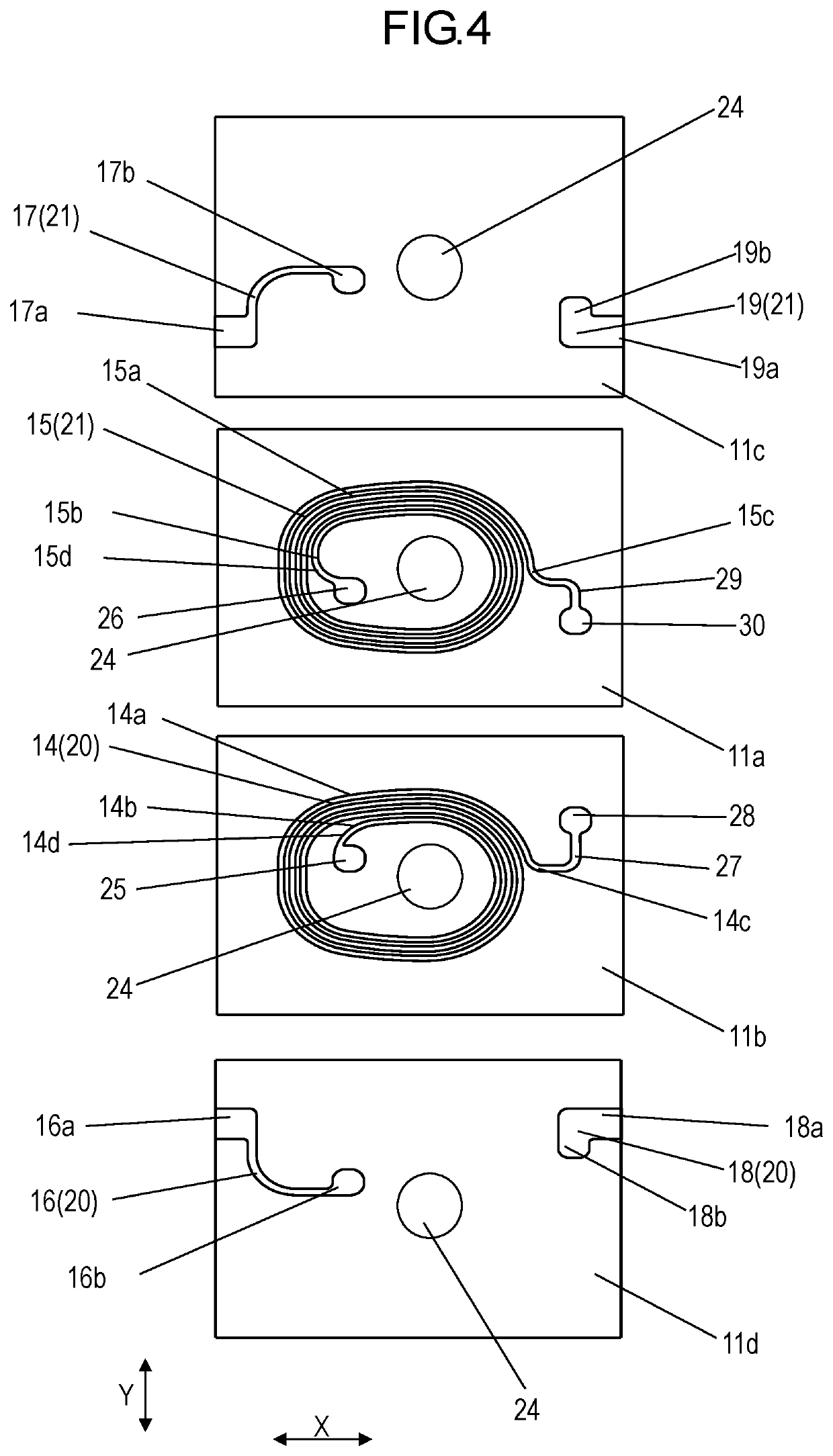Common mode noise filter
- Summary
- Abstract
- Description
- Claims
- Application Information
AI Technical Summary
Benefits of technology
Problems solved by technology
Method used
Image
Examples
Embodiment Construction
[0015]A common mode noise filter according to aspects of the present disclosure will now be described.
[0016]A common mode noise filter according to a first aspect includes a first insulator layer, a first conductor, and a second conductor. The first insulator layer includes a main surface and a back surface. The first conductor is disposed on the back surface of the first insulator layer. The second conductor is disposed on the main surface of the first insulator layer. The first conductor includes a first spiral body, a first pad, and a first connecting portion. The first spiral body is disposed at a position where at least part of the first spiral body overlaps the second conductor as viewed from a direction that the main surface of the first insulator layer faces. The first spiral body is in a spiral shape. The first pad is disposed inside the first spiral body on the back surface of the first insulator layer. The first connecting portion connects the first spiral body and the fi...
PUM
 Login to View More
Login to View More Abstract
Description
Claims
Application Information
 Login to View More
Login to View More - R&D
- Intellectual Property
- Life Sciences
- Materials
- Tech Scout
- Unparalleled Data Quality
- Higher Quality Content
- 60% Fewer Hallucinations
Browse by: Latest US Patents, China's latest patents, Technical Efficacy Thesaurus, Application Domain, Technology Topic, Popular Technical Reports.
© 2025 PatSnap. All rights reserved.Legal|Privacy policy|Modern Slavery Act Transparency Statement|Sitemap|About US| Contact US: help@patsnap.com



